Thai fruits are a diverse and flavorful produce native to Thailand, known for their unique tastes and vibrant colors. This tropical country’s warm climate allows for the cultivation of a wide variety of fruits.
Thailand is also famous for many juicy fruits, which are enjoyed ripe or unripe. These fruits vary in taste from sweet and juicy to tangy and refreshing, providing an array of options for every palate.
They are often enjoyed fresh, making for a popular and healthy snack, but they also play a crucial role in traditional Thai cuisine. Many Thai dishes, desserts, and beverages incorporate these fruits for a unique flavor.
Explore the types of fruits available in Thailand, along with the dishes and drinks that are made using these fruits. Also, you should explore the vegetables of Thailand.
24 Amazing Thai Fruits with Filters
Let your journey begin with 24 fruits coming from Thailand. Uncover all the produce used in dishes, beverages, and even for garnishing.
Additionally, let me show you the native, non-native, national, and exotic fruits in Thailand.
Plum Mango
- For Dishes
- Native
Plum mango is a popular fruit in Thailand, Malaysia, and Laos. It has a round shape and a vibrant yellow color. This fruit is like a small ripe mango with orange or yellow skin, offering a sweet and sour taste.
The fruit’s tender and jelly-like texture is great for enjoying fresh or included in Thai salads. Plum mango trees bear matured fruits from April to May, reaching a peak vibrant color.
Durian
- For Dishes
- National
- Native
Durian is the “King of Fruits” in Southeast Asia, in countries like Thailand, Vietnam, and Malaysia. It is beloved and hated for its potent scent, leading to its ban in some public places.
The fruit is a major export produce of Thailand, featuring a spiky green or brown skin. Under the rind, it has multiple segments of flesh with a creamy and sweet profile.
Each segment houses a large, inedible seed. In Thailand, the country has many durian varieties including sultan, chanee, kop, or tuan mek.
Coconut
- For Beverages
- For Dishes
- Native
Coconut is a fruit encased in a thick, fibrous husk, with a hard shell in Thailand. The fruit contains sweet water with white, fatty meat. Rich in fat, the flesh can be eaten in various forms or used to produce coconut milk and oil.
In Thailand, coconuts are used as fuel, cosmetics, medicine, and more. They are a favorite for their sweetness and softness, making the creamy coconut milk that’s central to Thai cuisine.
Papaya
- For Beverages
- For Dishes
- Non-Native
Papaya is a tropical fruit grown in many countries, including Thailand, India, Mexico, Central America, and other Southeast Asian regions. This fruit is a type of berry, with sizes ranging roughly from 10 to 30 centimeters in diameter.
At an earlier stage, papayas are green before turning into a vibrant yellow, orange, or even red color. Plus, the fruit has a central cavity filled with numerous black seeds.
The taste of papaya is characterized by a gentle sweetness. In Thai cuisine, papaya is great in smoothies and desserts, while the crisp texture of unripe papayas is a key ingredient for green papaya salad.
Guava
- For Beverages
- For Garnish
- Native
Guava, aka farang in Thailand, is a crunchy fruit with a green appearance and a white inner. This fruit, available year-round, is particularly favored for its mild sweetness.
The fruit has a round or oval form turning into a yellow or maroon profile upon ripening. The flesh, either white or deep pink, delivers a harmonious blend of sour and sweet flavors along with hard, tiny seeds.
In Thailand, guava is commonly enjoyed raw with chili salt, turned into refreshing juice for hot days, or used in candies, snacks, and desserts.
Longan
- For Dishes
- Native
Longan is a fruit widely cultivated in Thailand, India, North Vietnam, and New Guinea for its juiciness and sweet taste. These round fruits have a thin peel, flesh, and seed structure.
Interestingly, the name is translated to “Dragon Eye” due to the seed’s resemblance. Mainly cultivated in Thailand’s Chiang Mai region, the Thai variety is notably sweeter than its Chinese counterpart.
Rambutan
- For Dishes
- Native
Rambutan is a tropical fruit cherished in Thai cooking for its chewy and sweet flavor. The name “Rambutan” comes from the Malay word for “hair,” reflecting its reddish, orange, or yellow skin covered in soft, fleshy spines.
This fruit consists of skin, succulent flesh, and a seed. Its taste is similar to lychee and longan, featuring a sweet flavor with a slight tanginess.
The flesh, which can be whitish or pale pink, encases a seed, making rambutan a delightful snack or a vibrant addition to fruit salads.
Mangosteen
- For Dishes
- National
- Native
Mangosteen, hailed as the “queen of fruits” in Thailand and Southeast Asia, is native to the region. This fruit starts with a green color before turning into dark purple skin over more than ten days.
Under the dark peel layer is the flesh divided into 5 to 8 juicy segments, offering a sweet yet slightly sour taste. As a key ingredient in Thai cuisine, mangosteen is often featured in desserts, jams, and salads.
Lychee
- For Dishes
- Non-Native
Lychee is a sweet fruit from Thailand, derived from the Sapindaceae family. It’s recognized for its rough, pink-red skin and whitish flesh, encasing a brown or black seed.
The flavor is a blend of strawberries and watermelon with citrus and rosewater notes. Lychees are ideal for fresh consumption or in desserts.
In Thailand, it’s often enjoyed fresh, used in syrups, or combined with bananas and coconut milk for unique desserts.
Pomelo
- For Beverages
- For Dishes
- Native
Pomelo is a large, sweet citrus fruit commonly found in Thailand and countries in Southeast Asia. This fruit often comes in between 6 to 10 inches in diameter and contains 11 to 18 juicy segments beneath its thick, green rind.
On the juicy pulp, pomelo has a bitter thin film surrounding each segment. Pomelo offers a flavor profile akin to a milder grapefruit, blending sour, sweet, and slight bitterness.
In Thailand, it’s commonly enjoyed fresh with chili salt or as a key ingredient in a spicy salad mixed with shrimp and coconut milk.
Jackfruit
- For Dishes
- Native
Jackfruit is a sweet, tropical Thai fruit that has a rough and spiky green rind.
Typically, jackfruit usually has a round or oval shape.
Unripe Jackfruit will have thick yellowish-greenish skin and turn yellowish-brown when ripe. There are countless small pimples on the surface.
The fruit has numerous yellow segments, and each one will contain a seed. Its flesh often has a natural sweet taste with a slightly crunchy texture.
Lime
- For Beverages
- For Garnish
- Native
Lime is a small, green citrus fruit in Thailand that is about 3 to 4 cm in diameter. Kown is known for its oval shape and tangy taste, and lime is sharper and slightly sweeter than lemons.
Packed with vitamin C, limes are commonly used in drinks, foods, and sweets for a refreshing flavor. In Thailand, the Kaffir lime, with its aromatic leaves and bumpy fruit, is used in dishes like tom yum, adding a unique citrus fragrance.
Sapodilla
- For Dishes
- Native
Sapodilla, known as chico in some regions, is a beloved fruit in Thailand for its soft and brown color when ripe. This large berry, about 2 to 3 inches in diameter, has a stand-out sweet, juicy flesh with a grainy texture.
The fruit is earthy while boasting a brown to yellow color. It typically contains 1 to 6 bean-like black seeds.
People often enjoy sapodilla directly or add it to dessert recipes with other fruits to include more flavors.
Dragon Fruit
- For Dishes
Dragon fruit is a type of cactus in Thailand, also known as piyata in many other regions of the world. The fruit is widely cultivated in Southeast Asia, East Asia, India, and other tropical regions.
Thanks to a scaly look, it has the name dragon fruit. Plus, it has reddish-purple skin with green fins.
The dragon fruit is available in white, yellow, or deep-purple flesh. It consists of countless edible tiny seeds distributed in its flesh. In Thailand, people usually consume it as it is or include it in smoothies.
Tamarind
- For Dishes
- Native
Tamarind, or makam in Thai, is a fruit from a leguminous tree that originated in tropical Africa. The fruit has an elongated shape with green to brown skin, and when ripe, its flesh detaches, leaving the peel dry and brittle.
The brown flesh, filled with inedible seeds, can be sweet or sour. In Thailand, the sour version flavors dishes like tom yum and pad Thai, while the sweet variety is for making candies, drinks, and snacks.
Sour tamarind is common throughout Thailand, but the sweet kind, found mainly in Phetchabun province, is more expensive.
Starfruit
- For Beverages
- For Garnish
- Native
Star fruit is a crucial part of Thai cuisine, originating from Southeast Asia and now popular in South Asia, Brazil, the US, and the Caribbean. When sliced, it has a star shape, offering sour and sweet varieties.
The fruit tends to transition from orange-yellow when unripe to bright yellow upon ripening, boasting succulent and crunchy flesh. Star fruit is best enjoyed fresh or in juices and salads.
Langsat
- For Dishes
- Native
Langsat, also known as lanzones or longkong in Thailand, is favored for its culinary and medicinal uses. This fruit has a light yellow or brown peel with slightly hairy skin. They come in shapes from elliptical to round containing a cluster of 4 to 5 juicy, white segments.
With a balancing sweet with tart flavors, langsat is a popular choice for syrups in Thailand, though the bitter seeds are often removed when eating.
Salak
- Exotic
- For Dishes
- Native
Salak is a scaly-looking fruit grown in clusters on palms and features a unique reddish-brown scaly skin. Widely known as “snake fruit,” the fruit features three lobes around an inedible seed.
Salak offers a unique blend of sweetness and tartness, with a texture that varies from dry to moist and crunchy to crumbly. Commonly consumed fresh in Thailand, it’s also enjoyed with a dressing of salt and sugar.
Custard Apple
- For Dishes
- Native
Custard apple, also known as sweetsop, is a Thai fruit with a distinct knobby green skin. Surprisingly, some varieties even have a deep pink blush.
The fruit has numerous creamy white segments, each containing a black seed. For any newcomer, the fruit features a creamy texture and a delightful balance of sour and sweet flavors.
This fruit is cherished for its unique flavor profile and creamy, custard-like flesh, making it a favorite for fresh consumption and a variety of sweet dishes.
Pomegranate
- For Beverages
- Non-Native
Pomegranate is a fruit in Thailand that has numerous juicy pulps. These fruits thrive on shrubs or small trees up to 10 meters tall, with striking orange-red flowers.
Its fruit is similar to the size of a large orange, featuring a tough skin ranging from brownish-yellow to deep red. As for the pulps, they are full of juice with a red color.
Though not native to Thailand, they are popular for making juice or enjoyed fresh by locals.
Santol
- For Dishes
- Native
Santol is a fruit often featured in Thai dishes like som tam and prawn curries. This fruit appears in yellow and red varieties, sporting a thin rind and apple-like shape with a handful of seeds.
The white pulp of santol offers a sweet and sour taste, with its sweetness varying with the fruit’s maturity.
Rose Apple
- For Garnish
- Native
Rose apple is a favorite tropical fruit in Thailand with a bell-like shape. It looks sleek, with the wax layer covering the skin usually featuring bright red or light green color.
Its flesh has a crunchy texture and juicy profile with a hollow part in the middle containing about 1 to 2 seeds. The fruit is a blend of sweetness and a bit of sourness.
Gac
- For Dishes
- Native
Gac is a fruit growing from a vine from Southeast Asia, including Thailand. This fruit comes either round or oblong and has small spines.
When ripe, they turn from green to orange and red, along with yellow flesh and red seeds. The fruit has a mild taste, often used as a coloring agent to give dishes a vibrant red color coming from the seeds.
Hog Plum
- For Dishes
- Native
Hog plum, known in Thailand as makok, is a sour fruit with a green appearance. Recognizable by its relatively rough skin, the hog plum has white, crunchy flesh around a central seed, offering a tart flavor.
As a part of Thai cuisine, it’s a key ingredient in various dishes, including the famous som tam. Consumed raw or incorporated into juice, jellies, and concentrates, hog plum is versatile for its tartness.
As a part of Thai cuisine, it’s a key ingredient in various dishes, including the famous som tam. Consumed raw or incorporated into juice, jellies, and concentrates, hog plum is versatile for its tartness.
What Are the Types of Thai Fruits?
Explore the fascinating fruit types available in Thailand, which helps you get a better picture of the country’s food scene:
Grow in warm climates, often have a sweet and juicy flavor.
Examples: Durian, Papaya.
Characterized by a leathery rind and segmented flesh, known for their tangy and sometimes sweet taste.
Examples: Pomelo, Orange, Lime, Mandarin.
Fruits that have a large “stone” inside which is the seed. The flesh is typically sweet and juicy.
Examples: Mangosteen, Rambutan, Lychee.
Small, juicy fruits with a high vitamin content, often not sweet but tangy.
Examples: Thai Berries (like Ma-prang), Strawberries (grown in cooler regions of Thailand).
Fruits that may not fit neatly into the above categories, often unique to the region or less common.
Examples: Dragon Fruit, Jackfruit, Longan, Star Fruit (Carambola), Sapodilla (Lamut).
Don’t stop at knowing only about the fruits of Thailand as there are many dishes in the country that also make use of them.
What Dishes Use Thai Fruits?
These are the delicious Thai dishes that make full use of the fruits available in the country:
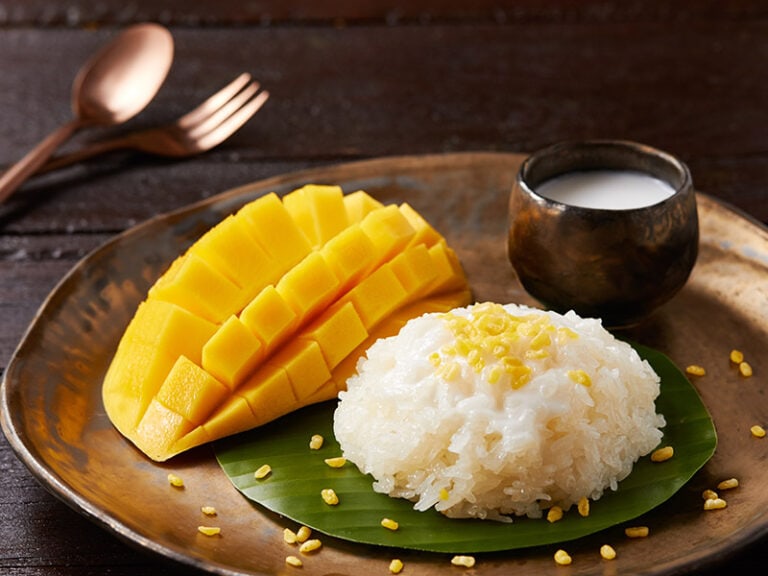
Khao Niao Mamuang
Khao niao mamuang is a beloved Thai dessert combining sweet ripe mangoes with sticky glutinous rice. The dish is drizzled with creamy coconut milk for an extra layer of sweetness and creaminess.
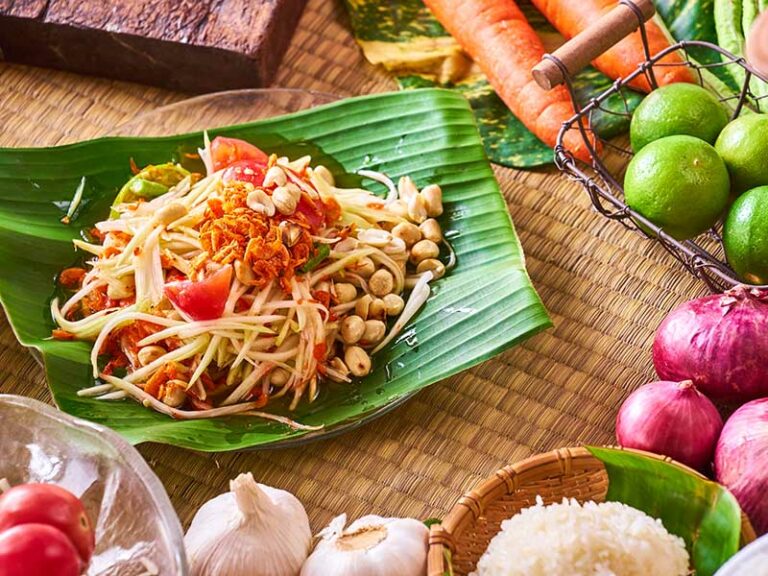
Som Tam
Som tam is a spicy Thai salad made from shredded unripe papaya. It often includes ingredients like chili peppers, lime, tomatoes, and peanuts, offering a mix of sour, spicy, and crunchy textures.
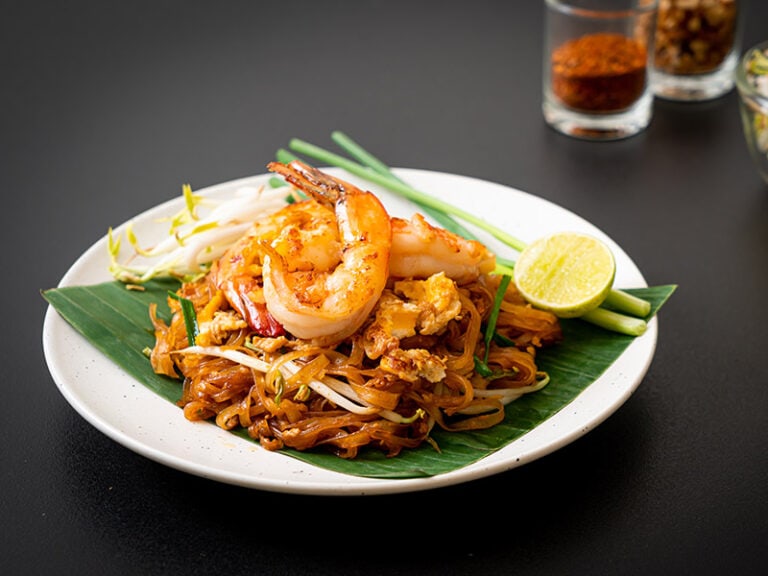
Pad Thai
Pad Thai is a popular Thai stir-fried noodle dish known for its complex flavors. It typically includes rice noodles, eggs, tofu, and is flavored with tamarind paste, fish sauce, and chili pepper.
There are many more Thai specialties that boast fruits to elevate the flavor to a new peak. Speaking of culinary, drinks are also where Thai fruits shine, thanks to the diverse range of tastes.
What Beverages Feature Thai Fruits?
Quench your thirst with these refreshing drink options from Thailand that are full of fruity profile:
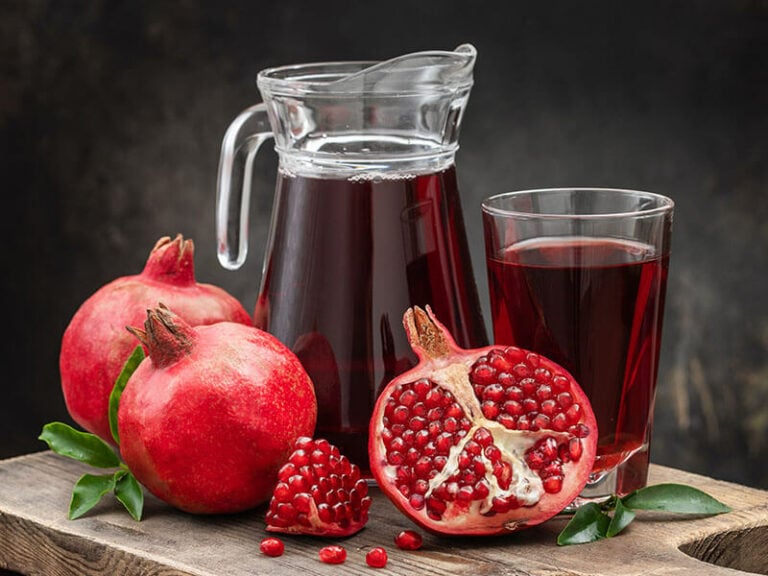
Nam Thabthim
Nam thabthim is a refreshing pomegranate juice popular in Thailand, known for its sweet and tart flavor. This drink pairs well with spicy Thai dishes and is sold by street vendors who prepare it fresh.
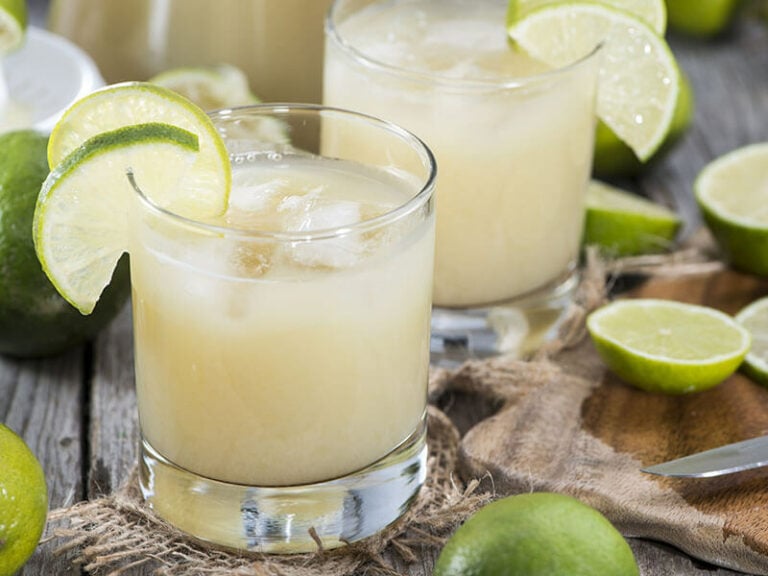
Nam Manao
Nam manao is a Thai-style limeade made from a mix of lime juice, water, and sugar, often served with sugar syrup on the side. It complements spicy or fatty Thai meals like curries and grilled pork skewers by balancing their flavors.
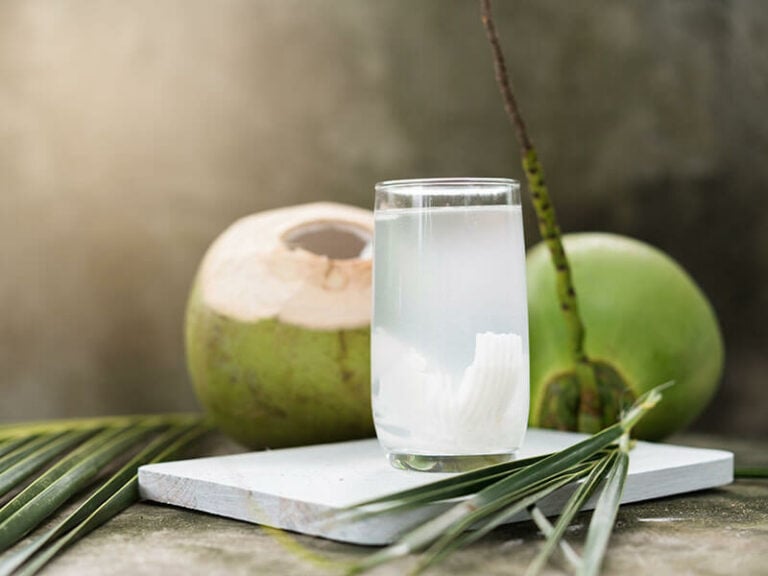
Nam Maphrao
Nam maphrao is simply coconut water, a staple beverage in Thailand celebrated for its delightful flavor and cooling properties. It’s often served with pieces of young coconut and complements various Thai dishes, especially spicy, rich, or salty ones, by soothing the palate.
Aside from the flavorful drinks in Thailand, you should spend some time discovering the vegetable choices in the country.
What Are Some Thai Vegetable Options?
Here are the popular veggies that you can find in Thailand:
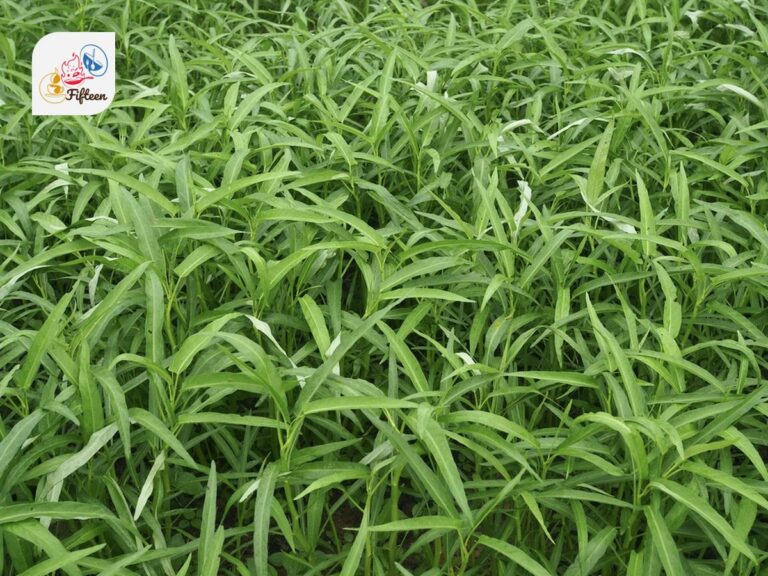
Morning Glory
Morning glory is a popular vegetable in Thailand, known locally as pak boong. It’s often stir-fried with garlic and chili, showcasing its crunchy stems and leafy greens.
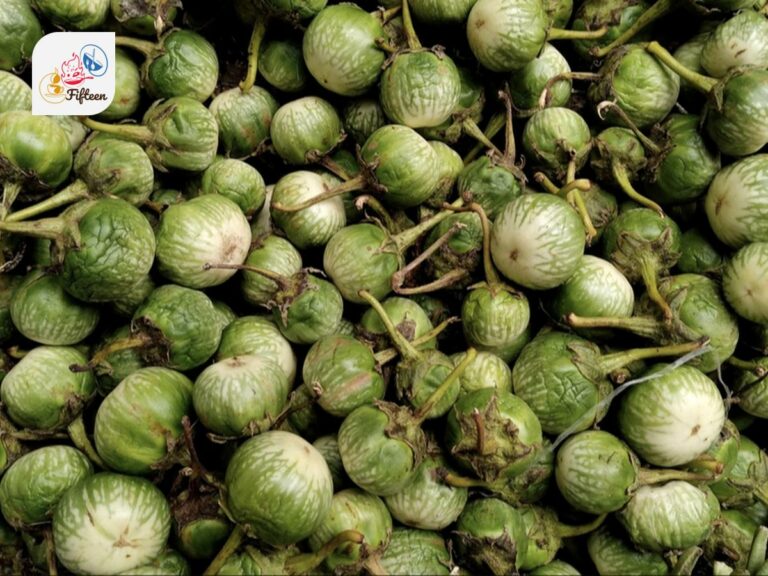
Thai Eggplant
Thai eggplant is a small, round vegetable that varies in color from green to yellow and even purple. It’s a staple in Thai curries, offering a slightly bitter taste and sponge-like texture that soaks up flavors.
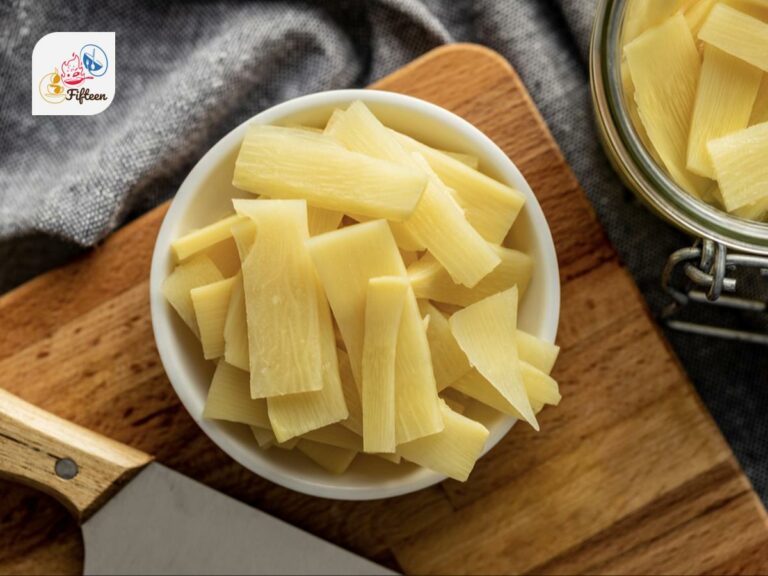
Bamboo Shoots
Bamboo shoots are young, tender shoots of the bamboo plant, used in various Thai dishes. They have a mild flavor and crisp texture, commonly added to soups and curries for an authentic Thai taste.
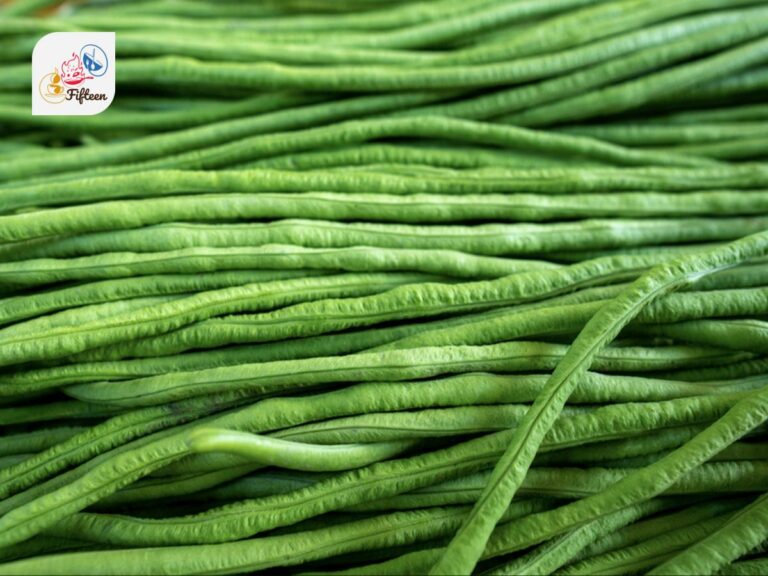
Yardlong Beans
Yardlong beans are long, slender green beans that are much longer than the common green bean. In Thailand, they’re often chopped and added to salads, curries, and stir-fries, valued for their crisp texture and sweet flavor.
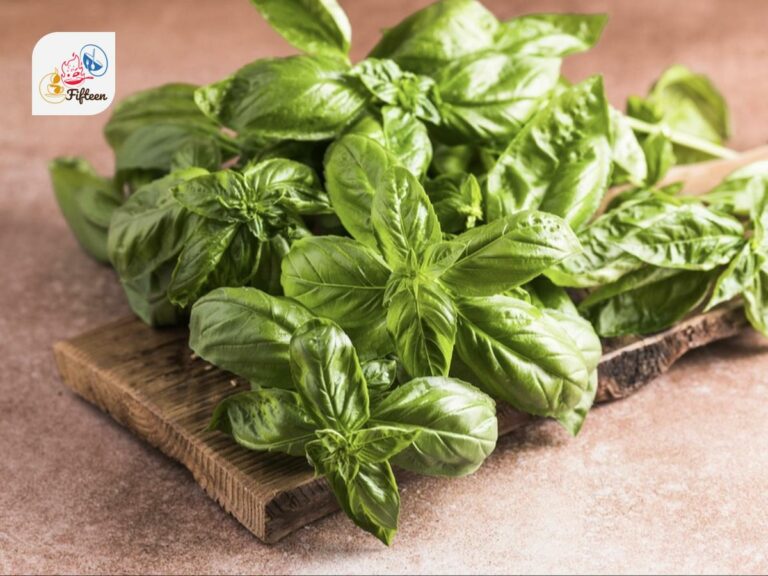
Sweet Basil
Sweet basil, known in Thailand as horapa, is an essential herb with a spicy, sweet flavor. It’s used to add a fragrant aroma to many Thai dishes, including stir-fries and curries, and is cherished for its distinctive taste.
Many of the vegetables coming from Thai offer a new take on the dishes in this country, as they are full of flavors and textures.
Once you’ve read about these fruits, make sure to share them with others and leave a comment discussing your experience.


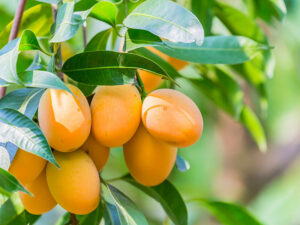
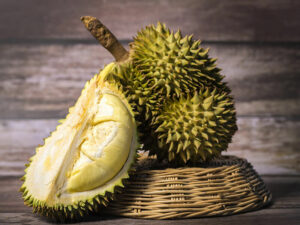
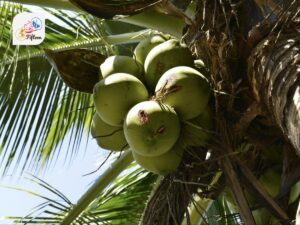
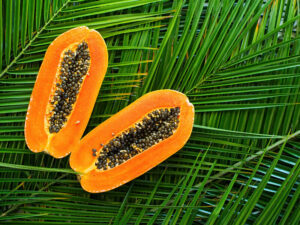
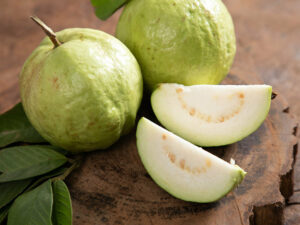
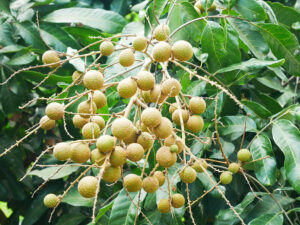
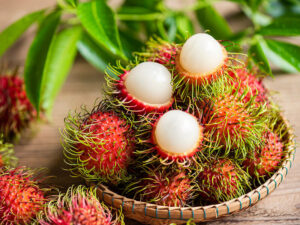
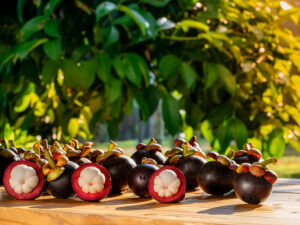
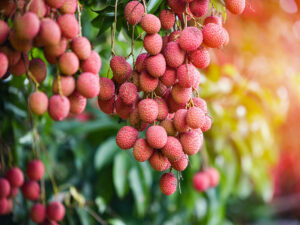
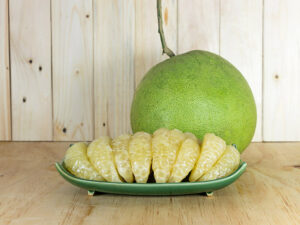
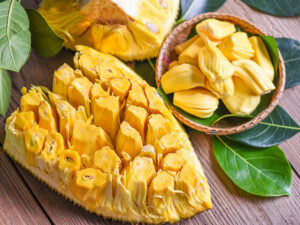
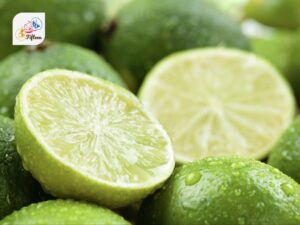
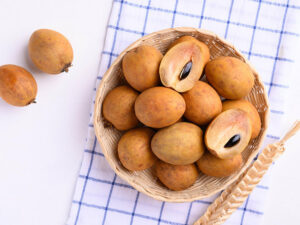
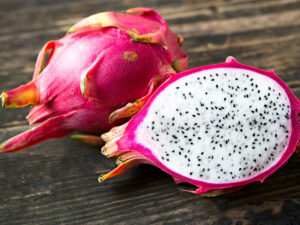
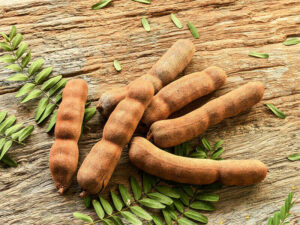
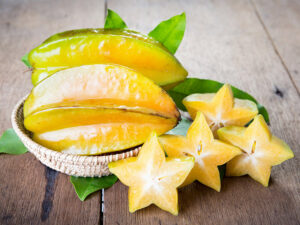
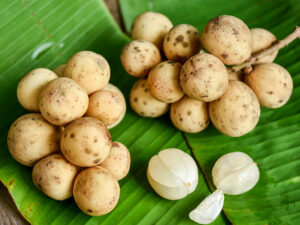
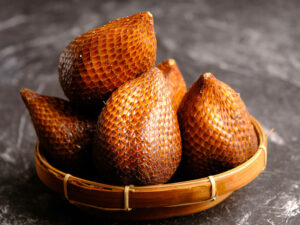
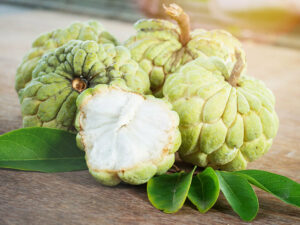
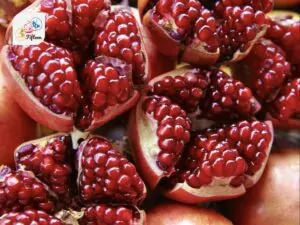
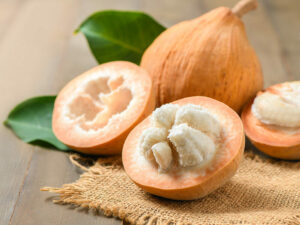
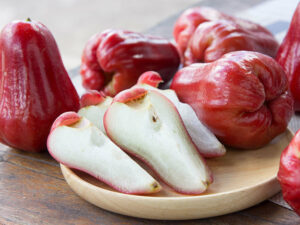
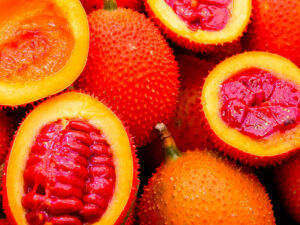
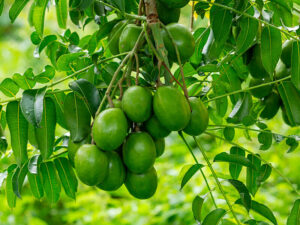
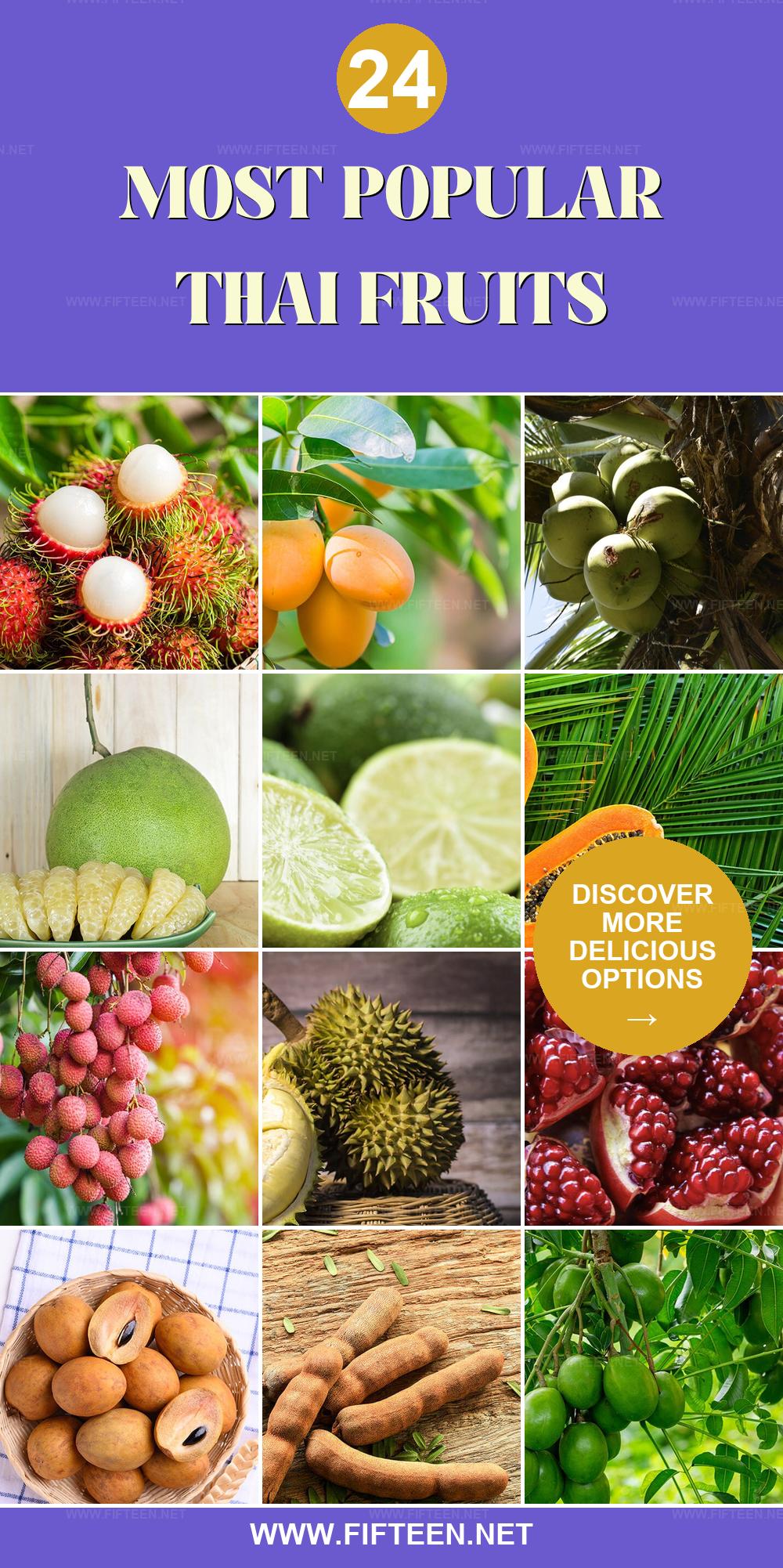
Jamie Scott
Editor in Chief, Senior Content Writer
Expertise
Home Cooking, Meal Planning, Recipe Development, Baking and Pastry, Food Editor, Cooking-video Maker, Western Food Evaluation Expert
Education
Le Cordon Bleu College of Culinary Arts
Local Community College, New York, NY
Jamie Scott is a skilled culinary expert and content creator specializing in Western cuisine. With over 15 years in the culinary field and formal training from Le Cordon Bleu, Paris, Jamie deeply understands how to blend nutrition with delicious flavors. His passion for cooking matches his commitment to making healthy eating accessible and enjoyable.
On Fifteen.net, Jamie brings a fresh perspective to classic dishes and beverages, offering readers insightful recipes, cooking tips, and a fresh view on meal planning that emphasizes taste, health, and simplicity.